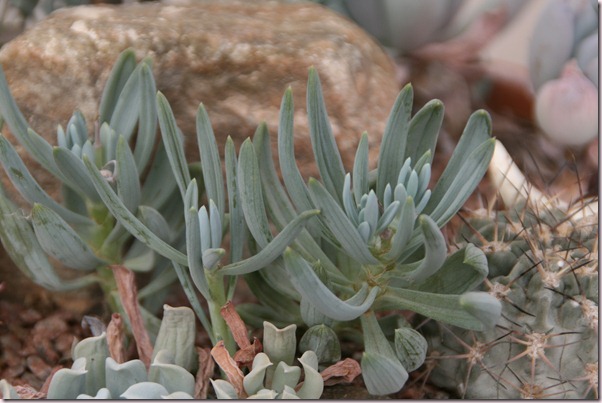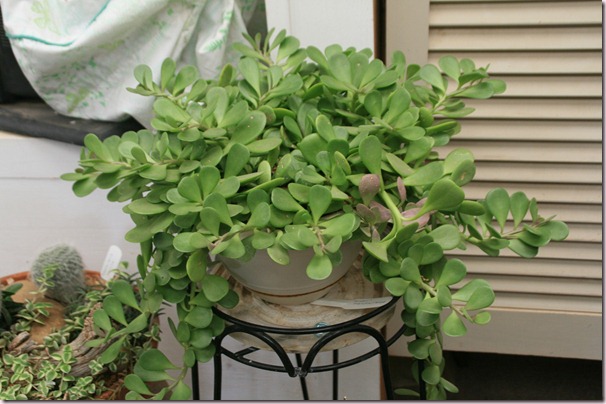Who knew? I didn’t. All those plants I couldn’t identify? Several of them turned out to be in the senecio family. I even discovered that the giant groundsel trees that fascinated me on Kilimanjaro in 2007 are senecio kilimanjari.
These senecio kilimanjari, called giant groundsel trees by the locals-and they are giant- are several hundred years old and can survive the severely cold nights because the dead fronds cover the trunk and protect the plant from the weather. My senecio specimens at home are not anywhere that old or large and don’t need to worry about cold weather as I protect them in the greenhouse during the winter.
Senecios include over a thousand species all over the world; many are weeds and everyday perennials, like dusty miller. Others from tropical and subtropical areas are succulents and caudiciforms; many of these have been reclassified to the genus Kleinia. But since I have just learned about senecios, I will just stick with that classification for now.
So I have discovered several senecios in my collection, such as this s. crassissimus rowleyanus which I have had for more years than I can remember-not a hundred, like the giant groundsels, though! More like twenty-five. But this is one of my favorite plants. It is easy to grow and is full and pretty.
S. kleinia or s. cephalophous, as I also found it called, is one I shared in Blooming Now, but I will share it again. It is a new plant to me and I am anxious for it to grow and fill out. But I have also enjoyed the blooms.
Senecio haworthii came back with us when we made a trip to California in 2000. It hasn’t exactly thrived, but growth comes and goes, and it has survived this long.
The senecio petraea makes a lovely hanging basket. I have pruned this pot several times. The edges of the leaves will get lined with red with a little more sun.
Senecio pendulus, also called inch worm, is one of my newer plants, and this picture doesn’t do it justice. What I think is its best characteristic is the pattern on the body of the plant at the origin of each of the leaves. This one’s flower is similar to the cephalophorus, but I still come back to the pattern of lines as the showy thing about the plant. The tallest stem has bloomed and had three more new crowns come up right on its top; that is why it looks so blunt. When I moved the pot to take the picture, the new little plant on top fell off when the parent plant swayed back and forth just enough to cause it to pop off. So now I have the baby rooting in a separate pot!

Senecio radicans, also called string of pearls, makes a wonderful hanging basket, as you can see here.


Senecio articulatus, also called candle plant, is somewhat like s. pendulus to me, but lacks the interesting patterns on the body of the plant. The flowers aren’t as pretty, either, but it makes a nice accent plant when you need something tall in a dish garden.

I don’t know for sure, but I wonder if this senecio mini-blue is called that because it is a small hybrid version of a s. mandraliscae. Just a guess on my part, as I am still learning about this identifying business.
And chances are good that I have overlooked some senecios in my collection, calling them something else, but I am learning. I am glad I discovered this family of succulents. I can certainly recommend them as a worthwhile addition to your collection if you have none. I am anxious to see what else I can find in this group to add to mine.










Recent Comments